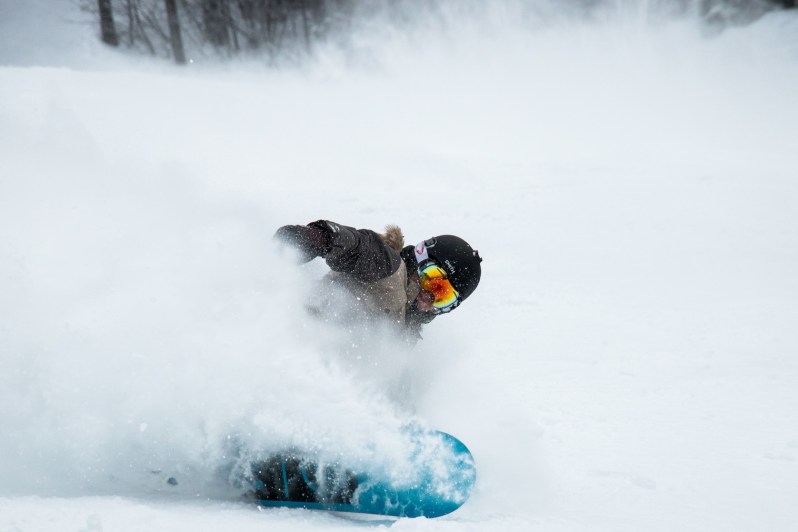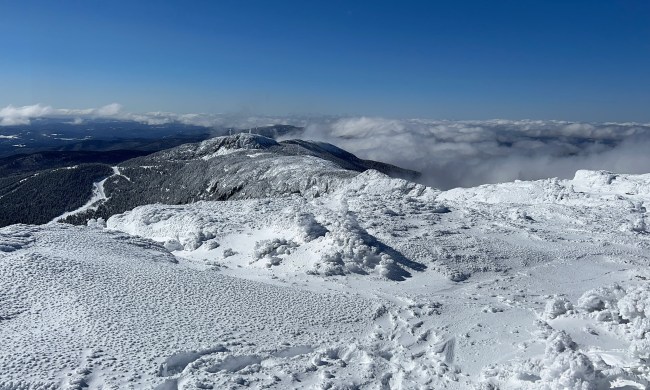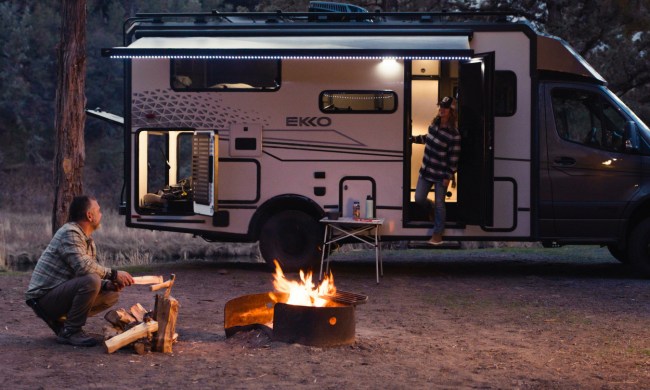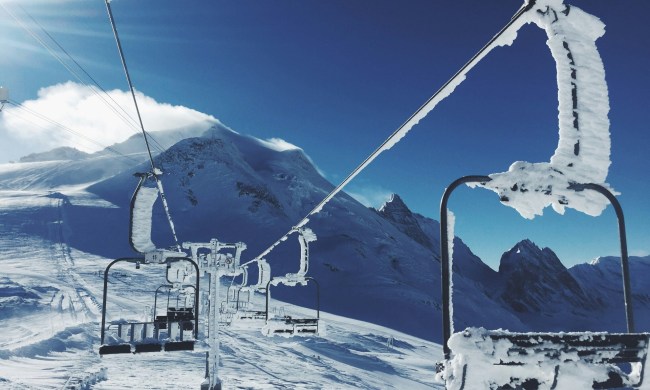
Snowboarding is all about the glide. As you gain momentum and rip turns, there’s an exhilaration like little else. Add in beautiful mountain surroundings, and sliding on snow is a seminal experience. But what makes a snowboard so slippery? Ultra-high-molecular-weight polyethylene (UHMWPE) has a unique combination of abrasion resistance and low friction. That makes it an ideal material for a snowboard’s base, enabling lap after lap of high-speed fun. It just works.
Snowboarders have two base options when picking a new board: sintered and extruded. Each has its pluses and minuses and suits a particular rider. So what’s the difference between the two? Let’s dive in.

What is an extruded snowboard base?
An extruded base starts as UHMWPE pellets. Melted down and then compressed into a sheet, an extruded base offers cost-effective performance. Because an extruded base is cheaper to manufacture, it’s typically found on lower-priced or entry-level snowboards. These boards still offer plenty of glide, just not the jacket-flapping speed of higher-end models. It’s all about affordable fun.
Additionally, extruded bases require less maintenance and are easier to repair. Sometimes, there isn’t time to wax your board before you hit the mountain. With an extruded base, that’s just fine. You’ll still get reliable glide. Not only that, but you can fix a core shot with ease.

What is a sintered snowboard base?
A sintered base also begins life as UHMWPE granules, but from there, it takes a different path. Placed under heat, as the particles melt, they’re put under high pressure. That helps the pellets bond and also forms pores between them. Those pores are central to a sintered base’s speed, allowing it to absorb more wax for enhanced slide.
You’ll find sintered bases on expensive boards built for ultimate performance. While that costs more, it’s worth it when you’re ripping morning groomers or floating through powder. The finest snowboard gear makes things better when you’re on the mountain. What makes a sintered base better? It’s faster and more durable. When regularly waxed, a sintered base offers unmatched speed. And since it’s composed of more rigid material, this top-end solution stands up to lap after lap of turns, jumps, and rails.

Which snowboard base should I look for when buying a snowboard?
Picking a snowboard base is important, but you can still have a good time, whichever you choose. It comes down to your budget, riding style, and maintenance habits. Here are the pros and cons of sintered and extruded bases.
Sintered base pros:
- Fastest option available
- The finest durability
- Absorbs wax better
Sintered base cons:
- More expensive
- Needs regular waxing
Extruded base pros:
- Cheaper
- Low-maintenance
- Easier to repair
Extruded base cons:
- Not as fast
- Absorbs less wax
Companies usually use the best kind of base for each rider. While beginner’s boards typically use extruded bases, top-of-the-line models use sintered versions. That can help guide your decision-making wherever you are on your snowboarding journey. Additionally, perusing websites and catalogs and comparing a brand’s latest offerings is fun. Over time, you can narrow down specific boards that suit you best, ensuring you get what you want. And that first day on snow offers excitement like little else.
If you’re getting into the sport, an extruded base’s lower cost of entry makes sense. Or, if you’re a park rider who regularly dings up their ride, the ease of repair is another plus. And for those who snowboard only a few times a year — and don’t want to wax — the low-maintenance slide is another plus.
On the other hand, a sintered base is better for devoted riders in search of speed. You’ll have to perform regular waxing and pony up more dough, but the acceleration is worth the time and money. Whether freeriding steeps or hitting features, the performance of sintered bases creates a better day on the mountain.
So, which base would we pick? Sintered all the way. Using the best snowboard gear is central to the experience. It just makes riding more fun. When you hit an early morning groomer or shred a tree run, a sintered base brings effortless glide. And what a feeling that is.
Also, waxing is an essential part of being a snowboarder. Sure, a sintered base needs more care and feeding. But so does a high-end sports car. And hot waxing before a powder day can be a soulful ritual. Melting the wax, scraping the excess, and polishing the base prepare your board and build anticipation for the day ahead. It’s worth the time.
Sintered and extruded snowboard bases both offer particular pros and cons. For the budget-focused rider or beginner, an extruded base makes sense. On the other hand, those who want high-end speed — and don’t mind paying a little extra — are better off with a sintered setup. While hot waxing is time-consuming, it’s a snowboarding ritual and extracts maximum velocity from a sintered base. Sure, you can make do with an extruded base. They’re just fine. But for us, a sintered base upgrades time spent on the mountain.



